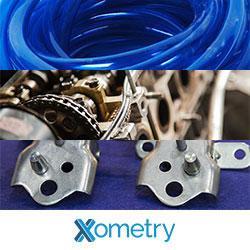Autonomous Solutions, Inc. Awarded 3rd DOD Funded Project for the Development of Driverless Vehicle Artificial Intelligence and Machine Learning
Autonomous Solutions, Inc. (ASI) has been awarded additional funding through the Department of Defense (DoD) to further apply machine learning and artificial intelligence to improve the mobility and behavior of autonomous vehicles in challenging environments.
Autonomous Solutions, Inc. (ASI) has been awarded additional funding through the Department of Defense (DoD) to further apply machine learning and artificial intelligence to improve the mobility and behavior of autonomous vehicles in challenging environments.
"In order for us to maintain our leadership in the unmanned vehicle space we must continue to push the boundaries of what is possible with machine learning and artificial intelligence," says CEO and founder of ASI, Mel Torrie. "These programs will ensure that we continue to offer our customers and partners the most advanced safe and simple autonomous solutions."
"The ability for vehicles to learn from past experience and continuously improve as they drive is important. These benefits multiply as the robots share their learning with other vehicles in the area in real time. The use of Machine Learning and AI will enable huge strides in efficiency improvement and maintenance reduction," says Dr. Jeff Ferrin, Research and Development General Manager.
Mel Torrie will be sharing more about this exciting technology development at the Silicon Valley Innovation and Entrepreneurship Conference in Beijing China on 15 July 2017 and at the Silicon Valley-China AI & Investment Forum on 19 July 2017 in Santa Clara, California in an AI session alongside leading pioneers in this space from companies like Tesla, IBM, Facebook, and Samsung.
For more information about ASI visit http://www.asirobots.com/research
###
About Autonomous Solutions, Inc.
Autonomous Solutions, Inc. (ASI) designs and manufactures unmanned vehicle systems, software, and components that are technology agnostic. ASIs robotic building blocks platform can be leveraged in a variety of industries including agriculture, automotive, mining, military, security, and industrial applications. ASIs vehicle automation kits are OEM independent and have been used for many different applications. Clients have experienced enhanced safety, increased efficiency, and improved accuracy.
For over 17 years, ASI has been a leader in vehicle automation and has worked with world leaders such as Sharp, CNH Industrial, Ford, FCA America, Toyota, Hyundai, Rio Tinto, Boeing, Lockheed Martin, Northrop Grumman, Dematic and more. ASI has a strong software team which makes up over half of its engineering work force. ASIs Mobius software allows for command and control of a fleet of vehicles in addition to ease of use, industry specific task planning, and vehicle diagnostics. ASI has extensive experience automating vehicles of all shapes and sizes with an emphasis on systems integration, obstacle detection and avoidance, tele-operation, and fully autonomous controls.
Featured Product

Get RFQs on Die Casting, Stamping, and Extrusion With Xometry, Your Source for Custom Parts
Xometry is your source for custom parts. Now, in addition to getting instant quotes on 3D Printing, CNC Machining, Sheet Metal, and Injection Molding, customers can create and send RFQs for die casting, stamping, and extrusion work to our nationwide network of pre-vetted manufacturers with just a 2D drawing. You will receive and be able to review responses from qualified shops within 7 days on an advanced web-based RFQ management platform. To learn more go directly to our site to issue and RFQ today. Stop wasting time managing RFQs through email and by phone, and start issuing RFQs at scale and in the cloud.
